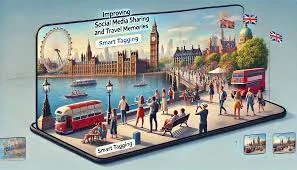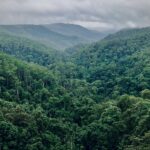Travel used to be pretty straightforward. Pack a bag, get in the car, drive somewhere, come back home. But somewhere along the way, it became this whole thing about self-expression and personal branding. Not that there’s anything wrong with that, it’s actually kind of interesting how people have turned their journeys into these carefully crafted extensions of who they are.
The funny thing is, it’s not really about the destinations anymore (well, not entirely). It’s about how people present themselves while they’re getting there, what their car says about them, how they document the whole experience. Social media obviously plays a huge role, but it goes deeper than just posting pretty photos.
Discover more insights in this related post tailored just for you.
Your Car Says More Than You Realize
Walk through any road trip gathering spot, maybe one of those scenic overlooks where everyone stops to stretch their legs, and check out the vehicles. Each one tells a completely different story about its owner. The spotless SUV with the roof box and bike rack belongs to someone with a very different travel philosophy than the beat-up van covered in national park stickers.
People are getting creative with personalization in ways that would have seemed excessive just a few years ago. Some drivers go for subtle touches that only fellow enthusiasts would notice, while others make bold statements that are impossible to miss. Things such as Private Number Plates have become surprisingly popular because they let people incorporate something meaningful into an element they interact with constantly.
Vehicle modifications have become a whole subculture. Overlanding enthusiasts spend thousands outfitting trucks for remote adventures they might take once or twice a year. Van life converts create elaborate mobile homes that look better than some actual apartments. Even regular commuter cars get personalized with bumper stickers, decals, and accessories that broadcast their owners’ interests and values.
Some people develop genuine emotional attachments to their vehicles, treating them almost as partners in their adventures. This might sound ridiculous, but there’s something to be said for having a reliable companion that enables exploration and carries all the gear that makes travel comfortable.
The Instagram Effect on Real Travel
Social media has completely changed how people think about documenting their experiences. Everyone’s a travel photographer now, which has some interesting consequences. On one hand, it’s democratized travel storytelling and given voice to people who might not have had platforms before. On the other hand, it’s created this pressure to find increasingly photogenic locations and experiences.
The challenge becomes balancing the documentation with actually being present for the experience. Many seasoned travelers have learned to find natural rhythms for capturing and sharing their journeys without letting the content creation process take over entirely.
There’s also this weird phenomenon where certain locations become incredibly popular because they photograph well, leading to overcrowding and sometimes environmental damage. Meanwhile, equally beautiful places that aren’t as “Instagrammable” remain relatively undiscovered.
Slow Down and Actually Experience Things
The counter-movement to fast-paced, destination-hopping tourism is gaining momentum. Slow travel prioritizes depth over breadth, encouraging people to spend more time in fewer places. This approach naturally creates space for more authentic self-expression because there’s time to develop genuine connections with locations and local communities.
Slow travelers often develop different relationships with their vehicles and routes. Someone who spends weeks exploring a region develops stories and perspectives that weekend visitors never access. These extended experiences create opportunities for more meaningful personal expression and genuine understanding of places.
This movement has also encouraged more sustainable tourism practices. Travelers who stay longer in fewer places typically have smaller environmental footprints and contribute more meaningfully to local economies rather than just passing through.
Finding Your People on the Road
One unexpected aspect of modern travel identity is how it helps compatible travelers find each other. Vehicle setups, stickers, and other personal expressions serve as signals that help people with similar interests connect.
Car camping enthusiasts can spot each other’s setups from across parking lots and often end up sharing route recommendations or gear tips. Van life communities have developed their own informal communication methods and gathering spots. Even mainstream travelers find ways to identify others who share their approaches to exploration.
Digital communities make it easier to plan meetups and share information, but real-world recognition still happens through visual cues that people can see in person. There’s something satisfying about the subtle nod of recognition between travelers who clearly share similar values or interests.
Being Real While Staying Safe
The balance between authentic self-expression and practical safety considerations gets tricky when traveling through diverse regions with different cultural attitudes. Experienced travelers learn to adjust their approach based on their surroundings while maintaining core elements of their identity.
This might involve temporary modifications to vehicle decorations, flexible clothing choices, or thoughtful social media sharing practices. The goal is staying true to personal values while being respectful and safe in different environments.
Many travelers find that this adaptability becomes part of their identity, demonstrating cultural awareness and flexibility that enhances rather than compromises their authentic self-expression.
Old School Meets New School
The most interesting travel identities blend traditional self-expression methods with modern technological possibilities. Personalized playlists become soundtracks for adventures. GPS devices get customized with meaningful waypoints. Apps help document experiences in ways that reflect individual storytelling styles.
The key seems to be using technology to enhance rather than replace authentic experiences. A thoughtfully personalized vehicle combined with genuine social media content creates a more complete travel identity than either element alone.
What makes this whole trend fascinating is how it’s turned ordinary road trips into opportunities for creative self-expression and community building. Whether through vehicle personalization, digital storytelling, or finding fellow travelers who share similar interests, modern journey-making has become as much about the traveler as the destination.
See what’s trending now—don’t miss our latest featured post.






